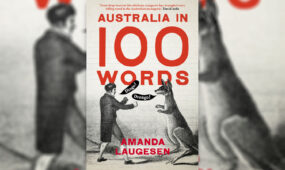Viewers may lose out in an unwieldy streaming video market
InReview
Upheaval and fragmentation in the streaming video-on-demand market could end up costing viewers more as they’re enticed into paying for multiple subscriptions, writes Mark C-Scott.

Streaming video platforms were meant to put choice back in the hands of the viewer. They’d be able to watch the content they wanted, when they wanted. But the growing fragmentation of the on-demand market threatens to leave consumers worse off.
While Netflix and Amazon are among the biggest subscription video on demand (SVOD) players, they have plenty of competitors for content.
In Australia, Stan and Foxtel have programs from Showtime and HBO respectively largely locked down. And Disney is set to abandon Netflix in favour of creating its own platform – a trend we’re sure to see more of from the major entertainment studios.
Announcing that it had acquired majority ownership in BAMTech, a streaming technology company, Disney said it sees the future of media as “defined by direct relationships between content creators and consumers”.
Facebook’s recent announcement of its video platform Watch is also a sign of things to come. Like traditional media and television, technology companies are making attempts to re-position themselves and take advantage of the rapid uptake of streaming services and changing viewer behaviour.
But while these new services give consumers unlimited entertainment options, for the most part, they don’t come for free. The cost and confusion of having content tied to so many different players could ultimately provoke a return to bundling and a pay TV model.
It’s all about originals
Netflix and Amazon are known for their original content, and they use these exclusive programs to persuade customers to subscribe. They’re also cheaper than having to negotiate rights and region deals with the studios.
Netflix is reported to be spending US$6 billion on original content this year. Amazon will also pay a considerable amount – by some estimates, it could hand over around US$4.5 billion in 2017.
In addition to SVOD companies, many social media platforms and technology companies are adding video streaming to their offerings. They’re using the original productions approach of Netflix and Amazon, which has arguably become the industry standard.
YouTube is set to fund the production of more than 40 original shows and movies in the next year. This includes outbidding Netflix and Amazon for the series Cobra Kai, a Karate Kid sequel, which will appear on the company’s subscription service, YouTube Red.
Apple has created original content for Apple Music. The first was Planet of the Apps, a startup show similar to Shark Tank, which had limited success. More recently, it commissioned Carpool Karaoke: The Series.
Facebook’s recent announcement of its video platform Watch suggests the company also sees original video as a key part of its future. It’s reported that Facebook is willing to pay up to US$3 million per episode for “centerpiece” shows. Refinery29’s Strangers, which featured at Sundance Film Festival, is rumoured to be part of Facebook’s future original content lineup.
In addition, it’s likely more studios will follow Disney’s lead and attempt to support their own direct-to-consumer platform. In the US, for example, the cable channel FX recently launched an ad-free subscription service that features its popular shows like American Horror Story and The Americans.
What will consumers pay for?
The continued upheaval in the SVOD market could end up pricey and unwieldy for consumers.
While they want choice, and individually the various subscription services are relatively cheap, accessing a significant breadth of original content will require multiple subscriptions.
Netflix’s monthly prices vary across three price brackets: A$9.99, A$13.99 or A$17.99, depending on the number of screens, and if you wish to have HD. Stan starts at A$10 a month and rises to A$15.
Apple Music has three price points: a student price of A$5.99, individual A$11.99 and family A$17.99. A YouTube Red subscription will cost at least A$11.99.
Combining a few of these services could see a family paying more than A$60 a month. And this doesn’t include any future additions like Disney, nor sports packages where there are also numerous streaming options.
Could we get to a point where bundled or aggregated subscription services, like a new incarnation of pay TV, become a more feasible choice?
Pay TV player Foxtel recently re-branded and restructured its streaming service. Foxtel Now has starting packs like Lifestyle, Kids or Docos for A$10, with the Drama or Pop pack at A$15 per month. Customers can then add premium packs – Movies or Sport for A$20 and A$29 per month each.

Get InReview in your inbox – free each Saturday. Local arts and culture – covered.
Thanks for signing up to the InReview newsletter.
Some families may see these packages as more favourable and manageable from a cost perspective.
But pricing doesn’t matter if the premium original content isn’t there, and we’re sure to see further fragmentation thanks to content producers establishing direct-to-consumer platforms.
The question now is: just how many platforms can viewers handle and how many are they willing to pay for?
Marc C-Scott is a lecturer in Screen Media at Victoria University and host of the Media Mayhem podcast, which discusses television, streaming, online video and the broader media industry. This article was originally published on The Conversation.
Support local arts journalism
Your support will help us continue the important work of InReview in publishing free professional journalism that celebrates, interrogates and amplifies arts and culture in South Australia.
Donate Here






Comments
Show comments Hide comments